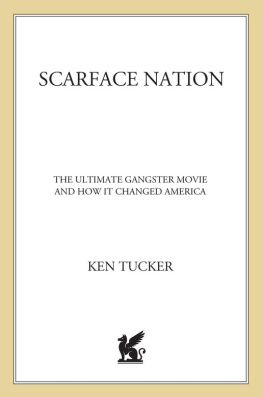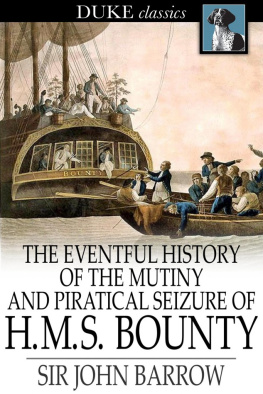NEW AMERICAN LIBRARY
Published by Berkley
An imprint of Penguin Random House LLC
375 Hudson Street, New York, New York 10014

Copyright 2017 by Roben Farzad
Penguin Random House supports copyright. Copyright fuels creativity, encourages diverse voices, promotes free speech, and creates a vibrant culture. Thank you for buying an authorized edition of this book and for complying with copyright laws by not reproducing, scanning, or distributing any part of it in any form without permission. You are supporting writers and allowing Penguin Random House to continue to publish books for every reader.
Berkley and New American Library are registered trademarks and the B colophon is a trademark of Penguin Random House LLC.
Library of Congress Cataloging-in-Publication Data
Names: Farzad, Roben, author.
Title: Hotel Scarface: where cocaine cowboys partied
and plotted to control Miami/Roben Farzad.
Description: First edition. | New York: New American Library, [2017]
Identifiers: LCCN 2017003885 (print) | LCCN 2017019898 (ebook) |
ISBN 9780698409828 (ebook) | ISBN 9781592409280
Subjects: LCSH: Drug trafficFloridaMiamiHistory20th century.
| Drug DealersFloridaMiamiCase studies.
| HotelsFloridaMiamiHistory20th century. |
Miami (Fla.)Social life and customs20th century. |
Miami (Fla.)History20th century.
Classification: LCC HV5833.M48 (ebook) | LCC HV5833.M48 F37 2017 (print)
| DDC 363.4509759/381dc23
LC record available at https://lccn.loc.gov/2017003885
First Edition: October 2017
Jacket photo of Biscayne Bay by Deatonphotos/Shutterstock
Jacket design and montage by Emily Osborne
Title page art: silhouette of palm trees Champ008/Shutterstock.com
While the author has made every effort to provide accurate telephone numbers, Internet addresses and other contact information at the time of publication, neither the publisher nor the author assumes any responsibility for errors, or for changes that occur after publication. Further, publisher does not have any control over and does not assume any responsibility for author or third-party Web sites or their content.
Some names and identifying characteristics have been changed to protect the privacy of the individuals involved.
Version_1
For Karen and my Bears
For Mom and Dad
For my hometown and our scars...
Memory / is another name for ghosts and their awful hunger.
EUGENE GLORIA
Contents
Introduction
I N 2001, OUR documentary Raw Deal: A Question of Consent, which examined a case of alleged rape at a University of Florida fraternity house, premiered at the Sundance Film Festival to an avalanche of audience and critical acclaim. The New York Post splashed Raw Deal on its cover with the headline Sundance Shocker. We were twenty-two years old, among the youngest filmmakers ever invited to the festival and the only ones ever invited from South Florida, and now our film was the talk of Sundance. Agents and managers were calling, asking us if we were heading to New York or Los Angeles. We thought that was ridiculous: we were heading home to Miami.
Miamis reputation as a city that welcomed the movie industry was cemented in the 1990s with a string of films that traded on the gorgeous backdrop the city provided: The Birdcage, Bad Boys, Ace Ventura: Pet Detective and The Specialist. But what Miami didnt have were homegrown filmmakers telling Miami stories. Carl Hiaasen and Edna Buchanan chronicled the city in the pages of the Miami Herald and later in novels, but there was no equivalent of what Woody Allen or Spike Lee is to New York or what Barry Levinson is to Baltimore. We were going to become those guys. And the story we wanted to tell first was the story of Miamis cocaine boom in the 1980s, the story of the Cocaine Cowboys.
Even though we both were still in elementary school when the 1980s ended, growing up in Miami during that decade made an indelible impression on us. While the rest of the country was suffering through oil shocks and usurious interest rates, Miamis economy was buoyed by a white powder that could be bought for one thousand dollars a kilo in Medelln and sold for fifty thousand dollars a kilo in Coconut Grove. The city was awash in cash, and everyone seemed to know someone who drove a Mercedes yet had no visible means of support. Miami was a boomtown: not since the discovery of gold nuggets in the Sacramento Valley in 1848 led to the California Gold Rush had there been such massive wealth generated so quickly in one place. As a result, law and order broke down so completely that one federal judge declared that Miami was on the ragged edge of anarchy.
We started with the thesis that contemporary Miamithe Gateway to the Americas, as the civic boosters called itwas built on the back of the cocaine industry. Yet when we began doing research in 2003, it was shocking how little of the citys history from just twenty years prior had been documented and analyzed. There were only two nonfiction books written by journalists who covered Miami during the good-ol-bad-ol days and one autobiography by a former trafficker turned snitch. And since our research began at the dawn of the Google Age, all of the contemporaneous news reporting was stored away on microfiche in filing cabinets at the citys main library. Our questions about how the cocaine industry impacted the development of Miami seemed to puzzle one of the citys premier historians. It seemed that by the end of the 1980s, as the crack cocaine scourge was destroying entire neighborhoods and politicians were proposing the death penalty for drug kingpins, interest in the subject of Miamis cocaine boom died.
Documenting the underworld is always tricky. The gangsters of Miamis cocaine wars knew that the only way you exited the business was in a box or to a cell, and they left behind precious little evidence with which to piece together their lives. We relied on police intelligence reports, surveillance photos and court testimony to verify the stories of the subjects we interviewed for Cocaine Cowboys. But because the drug business is so compartmentalized and there were precious few first-person accounts, it was difficult to see the big picture and how people and events tied together. Thats why Roben Farzads Hotel Scarface is such an accomplishment.
Using the infamous Mutiny Club, the Ricks Caf of Miami during the cocaine wars, to tie three generations of Cuban exile smugglers together, Farzad pulls back the curtain on an underworld populated by smugglers and assassins, dope lawyers and drug agents, snitches and party girls. Fueled by marching powder and Dom Prignon and secured with MAC-10s, the Mutiny was a world that few entered and even fewer left unscathed.
Hotel Scarface is an unflinching account of the social, economic and political forces that merged into a perfect storm and threatened to destroy the morality of a major American city. It almost makes you want to empty the contents of your Deering grinder onto a mirror and roll up a hundred-dollar bill. If it were 1980.
Billy Corben and Alfred Spellman, producers of the documentary series Cocaine Cowboys
Cast of Characters
The Mutiny at Sailboat Bay: A hot hotel and club in Coconut Grove, Florida.
Ricardo Monkey Morales: CIA-trained bomber, assassin, drug dealer and informant.














